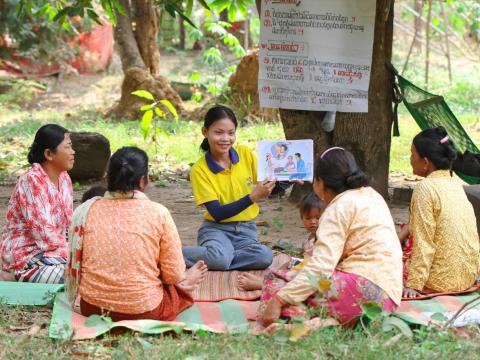Tools for working with small, nutritionally at-risk infants: A mixed-methods study
This is a summary of the following paper: Engler R, McGrath M & Kerac M (2023) Training packages and patient management tools for healthcare staff working with small, nutritionally at-risk infants aged under 6 months: A mixed-methods study. Children, 10, 9, 1496. https://www.mdpi.com/2227-9067/10/9/1496
Small or nutritionally at-risk children are especially vulnerable to mortality in the short term and to morbidity (including poor development) in the long term. However, specific training materials on working with this high-risk group are not widely available. There is a need to determine what exists and where the gaps are for these materials. This two-part study included: a) a scoping review of the literature surrounding existing training packages; and b) a qualitative study with semi-structured key informant interviews providing insights into how training was used and perceived.
Scoping review search terms included: "training tools”, "training manuals”, "training packages”, and "guidelines for training staff working with infants under six months”. Training was targeted at different levels, ranging from management staff to frontline healthcare workers. Operational guidelines were excluded. The ‘Consolidated Criteria for Reporting Qualitative Research’ (COREQ1) were used to ensure completeness of the research methods for the qualitative component. A total of nine interviewees were included in the study out of 17 invitations sent. Participants were able to share experiences outside of the key questions, if they seemed relevant to include. Questions revolved around three objectives: awareness of different training available and experience of its use, identification of perceived issues and gaps, and identification of how training could be improved.
The literature review revealed 14 relevant training programmes/patient management tools, which can be found in the original paper. Most were directed at trainers (n=4) and primary health workers (n=5). Three training programmes targeted emergency relief staff: ‘Harmonised Training Package’2, ‘IYCF-E Toolkit’3, and ‘Baby Friendly Spaces’4. All training programmes addressed mothers and infants, although cMAMI5 was the only tool that specifically targeted small and nutritionally at-risk infants under six months.
The main issues and gaps revolved around counselling skills for breastfeeding and mental health, ongoing monitoring, follow-up trainings, and emergency preparedness. There was also a lack of fixed, well-defined assessment criteria, which are important to identify admission and discharge cut-offs. It was outlined that changes in assessment criteria, from weight for height to MUAC or weight for age, still create confusion as to which measure should be used. Additionally, few training resources covered anthropometric assessment.
The authors acknowledge that this was not an exhaustive systematic review, and thus that their study can only provide an idea of the gaps in evidence and falls short of a comprehensive review of resources. Non-probability (purposive) sampling was used to select professional contacts via the MAMI Global Network.6 This sampling method does introduce selection bias, but it was necessary for this specific research question to be addressed efficiently – so this was unavoidable. The sample size for interviews was small, although varied, and a larger group may have been impractical given the detail required from each participant. Nonetheless, there was a lack of interviewee experience with the ‘Baby Friendly Spaces’ tool, which would have been valuable.
The authors highlighted several themes for improvement, such as the need for training programmes to be comprehensive, context specific, and employ a variety of delivery methods (e.g., lectures, group simulations, clinical practice, etc.). The authors also concluded that:
"It would be useful to have a core curriculum and package endorsed by a respected and authoritative organisation. However, any such package should have options for adaptations and local adjustments”


 English
English Français
Français Deutsch
Deutsch Italiano
Italiano Español
Español